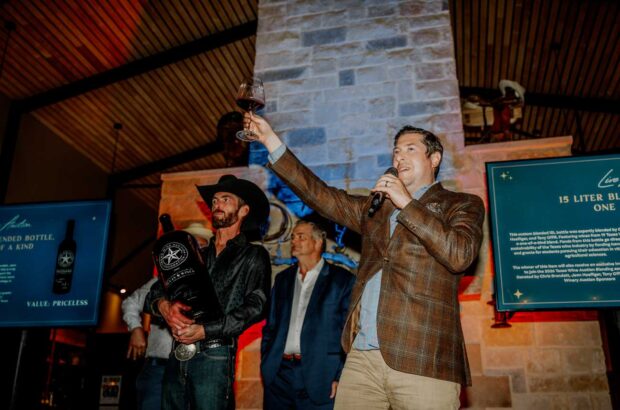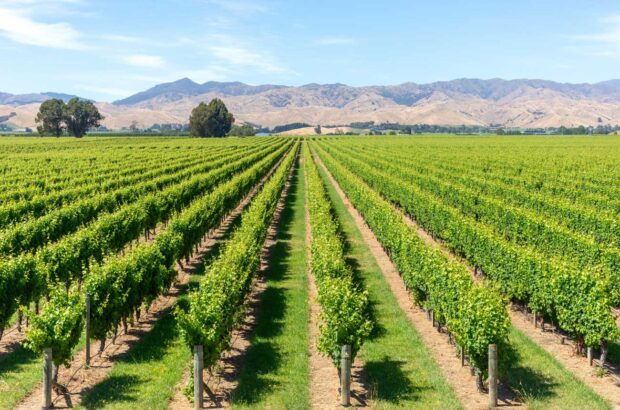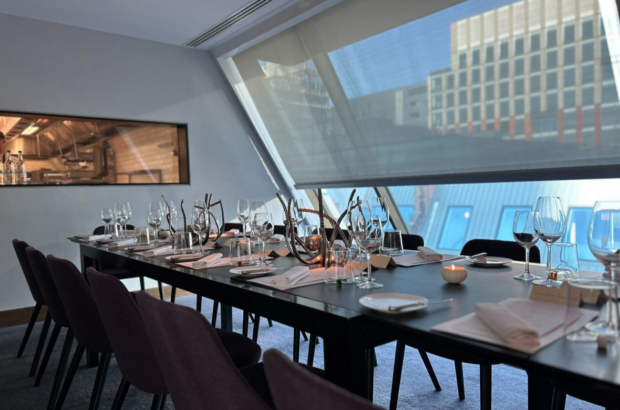American vintner Alex Gambal appears to be enjoying a happy retirement skiing in the mountains of Wyoming, but the path that brought him here was anything but direct. Although Gambal is among the most successful Americans to make wine in Burgundy, the learning curve was steep and the obstacles were nearly insurmountable. The challenges and pleasures of his journey are admirably laid out in his book Climbing the Vines in Burgundy (£18.99 Hamilton Books, August 2023).
‘Archetype of a small négociant house that is both demanding and trustworthy, Maison Alex Gambal, created by an American who fell in love with Burgundy, has emerged in barely a decade as one of the steadiest and most quality-oriented of the Côte de Beaune.’ This 2015 quote, from French wine magazine La Revue du Vin de France, typifies the reception his wines received in France. Gambal’s work was welcomed – celebrated, even – in a remarkable fashion in a nation that has sometimes been chauvinistic about its local produce, his wines appearing on lists in some of France’s finest restaurants. Despite his success, however, in 2019 Gambal sold his domaine to Boisset Collection, the powerhouse wine group based in California but with it roots firmly in Burgundy, and headed by Jean-Charles Boisset.
Forty years earlier, having graduated with a degree in political science from the University of North Carolina at Chapel Hill, Gambal had returned to Washington DC to work in his family’s real estate and parking business. He married young and his first child was born when he was 25, leading to a settled domestic life instead of 20-something adventures. Gambal indulged instead in vinous adventures and was taken under the wing of Washington-area wine maven Sidney Moore, proprietor of Mayflower Wine & Spirits, whose shop was a magnet for local collectors.
In 1992, Moore introduced Gambal to Burgundy impresario Becky Wasserman (Decanter Hall of Fame award recipient in 2019), who worked from her base in Burgundy to line up small, top-quality domaines with importers in the US. Wasserman offered Gambal an internship, and in 1993 he and his family arrived in Burgundy, where he set about learning the ropes of the wine trade. After three years with Wasserman (who died in 2021), Gambal attended the Lycée Viticole in Beaune and completed internships with Domaine de l’Arlot and Comtes Lafon before starting out as a négociant.
Decanter Burgundy correspondent and DWWA Regional Chair for Burgundy Charles Curtis MW puts the questions directly to Alex Gambal.
Alex Gambal at a glance
Born 1957, Washington DC
Parents Sergius and Alyce Gambal
Education St Stephen’s Episcopal School; University of North Carolina at Chapel Hill; Lycée Viticole de Beaune
Domaine-owned vineyards (2018*) 12ha spread over 40 parcels and 15 appellations
Annual production (2018*) 80,000 bottles
Favourite vintage to make wine ‘2005 for reds – the grapes were perfect; but for white, 2004’
Favourite terroirs to vinify Red Nuits-St-Georges, Clos des Argillières (1er cru); White Puligny-Montrachet, Les Enseignères (lieu-dit)
[*Last year of production before the domaine’s sale to Boisset Group]

Alex Gambal
CC: What was it like starting a business in France back in the 1990s?
AG: My wife and I put our kids at eight and 10 years of age in the local schools, where they became bilingual, and we were in the right place at the right time. The other kids’ parents were winemakers and we would all taste together. Our business expanded rapidly, from a couple of barrels of wine to buying enough grapes to make 50 barrels. By 1999, there was so much available that I made 55 wines; now you can’t find a drop. I used to be able to make four Vosne-Romanée premiers crus, including Beaux Monts, Malconsorts, Petits Monts and Suchots, and grands crus like Chambertin, Chapelle-Chambertin and Charmes-Chambertin, Bonnes-Mares, Clos Vougeot and Echezeaux. It was a different era; people had wines to sell and there weren’t as
many small négociants as there are today.
By 2004-2005, it was harder to source the grapes since small growers were starting to bottle more and more of their wine. At the beginning, the bigger négociants, like Girardin, Latour, Boisset and Jadot, left plenty of crumbs on the table; they didn’t care about the little ants. Eventually, however, there were fewer crumbs and more ants, so I bought vines to produce Bourgogne Pinot Noir and Chardonnay, and some property in Volnay.
Gambal expanded his holdings in 2007 with purchases of Chassagne-Montrachet premier cru La Maltroie and a hectare of Puligny-Montrachet village-level vines below Clavoillon. He expanded further in 2011, buying Bâtard-Montrachet grand cru, Puligny-Montrachet lieu-dit Les Enseignères and village-level Chassagne-Montrachet, as well as Santenay and Santenay premier cru, from his wine school teacher Philippe Brenot.
CC: What was it like working as an expat?
AG: The advantage of being an expat was being able to look at everything with fresh eyes, avoid built-in biases and pick out the best practices as I saw them being done. The most difficult thing was learning another culture, but I loved France and never got tired of it. My curiosity was my greatest advantage, and I was not afraid to make mistakes.
CC: What do you miss?
AG: In 2016, I lost half my grapes to frost. I don’t miss the risk of being a farmer, even though I do miss the winemaking process – I have great memories of that. Another thing I don’t miss is the paperwork necessary for making wine and operating in France. In time, however, you learn to shrug your shoulders and get on with it.
CC: What is your favourite Burgundy?
AG: I probably drink more Chardonnay. I never imagined making more Chardonnay than Pinot Noir, but I had a real feel for the grape. I was able to buy Chardonnay as grapes early on. With Chardonnay you just press the grapes and ferment the juice. It’s more difficult with Pinot Noir since you need a certain volume. For red wine, you could get barrels of finished wine, but it was harder to get larger contracts for grapes since the old négociant houses often controlled these with contracts that had been going on for generations.
I like red Burgundy either really young or really old. In between, it’s more of an intellectual exercise. One of the bottles that moved me the most was a magnum of Vieilles Vignes Musigny 1947 from de Vogüé, which I drank in January of 1993 when a well-known wine collector poured it at a tasting with Becky Wasserman. The perfume exploded from the glass – it was spectacular and unbelievable. When I was selling the business to Boisset, Jean-Charles [Boisset] brought out a magnum of the 1999 Musigny – it had the same magic DNA of the terroir. I have always been partial to Chambolle – that’s my go-to wine in Burgundy every time.
CC: What dangers loom for Burgundy?
AG: Prices. I noticed that [at the last Hospices de Nuits auction] a barrel of Nuits-St-Georges 1er cru Les St-Georges sold for €60,000. Wines are selling for crazy prices. If you’re buying village-level Meursault [as a négociant], you’re now paying close to €10,000 per barrel, which means you have €33 invested in the bottle just for the juice, before you do élevage or bottling. You need to double the price [at wholesale] to make any money, and even if you’re working on modest margins, the wine will end up at US$140-$150 on the retail shelf.
Frédéric Mugnier told me that his 2009 Musigny was sold for $2,000-$3,000 in New York before he had even released it. At these prices, wine is only for the billionaires. Even [regional] Bourgognes are selling for $50. Perhaps the pressure [on prices] would ease if we could sell more wine direct to consumers, but I don’t know if it’s possible or worth the effort.
I’m glad I don’t have to worry about sales any more… selling wine was the most difficult part of the process, and the undercapitalised nature of the wine business means that the people with the passion don’t usually have the money.
Wine is the greatest product in the world but one of the toughest businesses in the world, and that’s the part that I don’t miss at all. Compared to sales, making the wine is easy. You can make good wine if you have good grapes and are disciplined. But the Burgundians do everything themselves; they come in off the tractor and make the wine. Being a great grape farmer and being a great winemaker are two very different things, but today, there are so many great winemakers, which is what makes this the golden age of Burgundy.
CC: Do you have any regrets?
AG: Not many. Perhaps in retrospect I regret not buying land sooner, but I didn’t have the money earlier, and I didn’t have the experience. I do miss my friends… At the age of 61, I was ready to turn it over to another generation, but my kids weren’t interested in the business: global warming is closing in, and frost is an ever-present danger. My second wife Diana became ill [she passed away in 2020]. There were other things I wanted to focus on, and one of them was telling this story. I wrote most of the book in about eight weeks in the spring of 2019, but the project took another four years to complete. It was hard to finish and hard to find someone to publish it. The only thing worse than the wine business is the publishing business.







